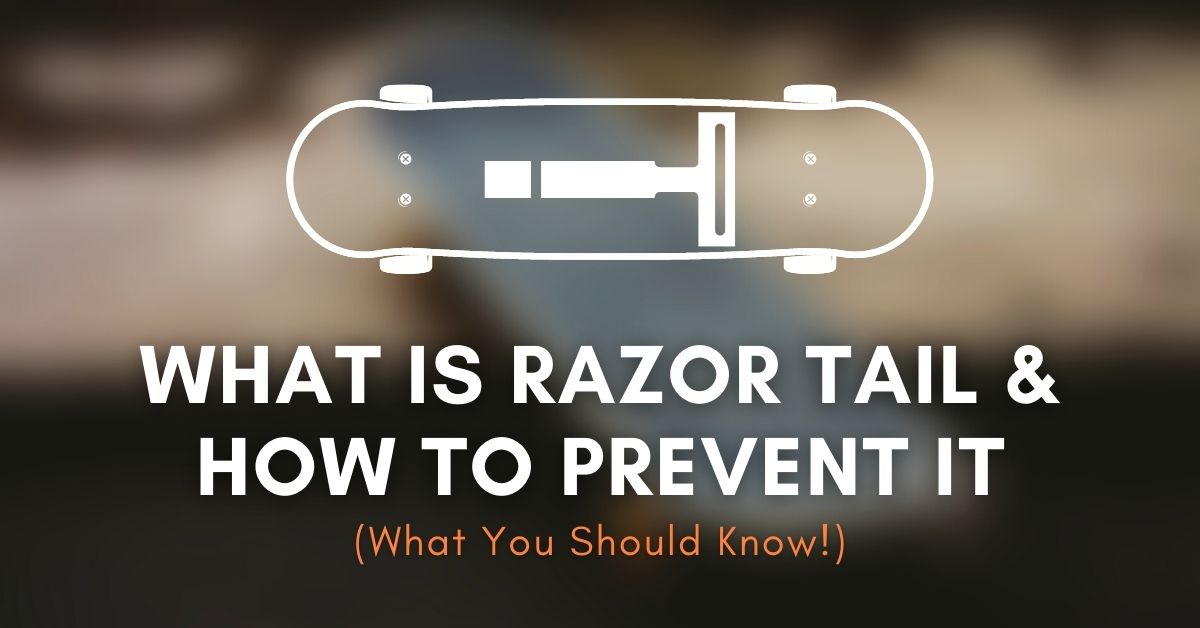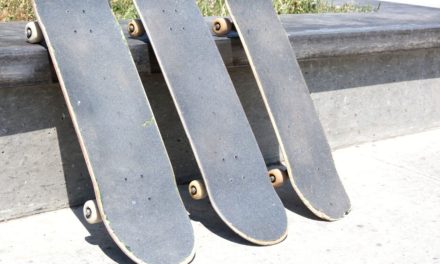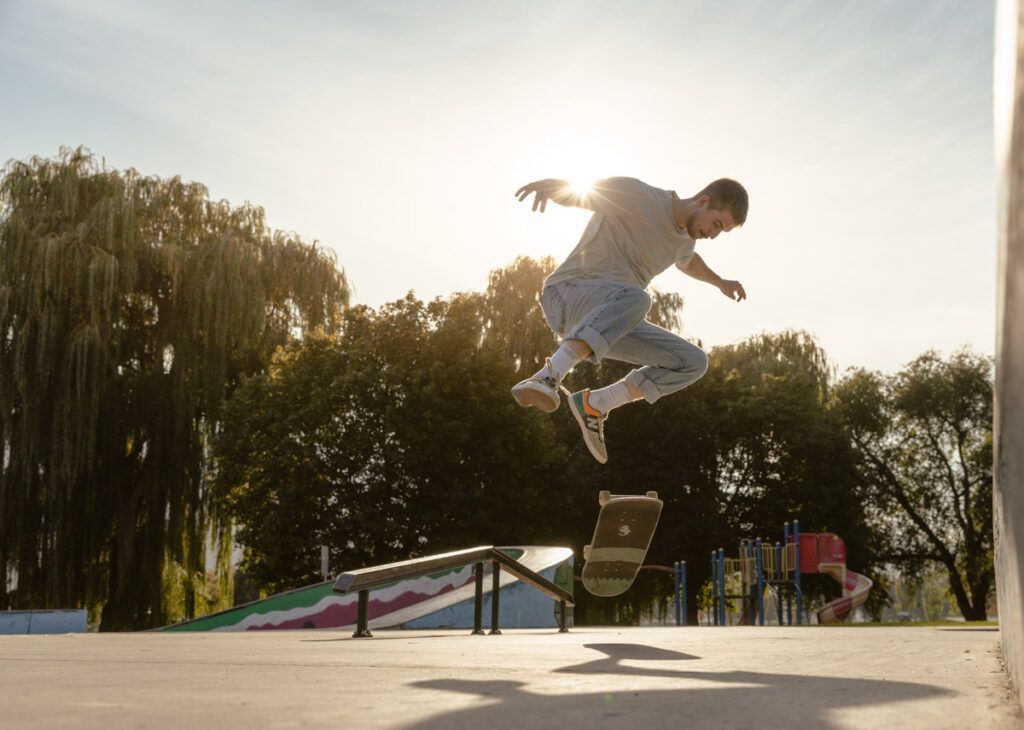Razor tail is a common problem in skateboarding that can be easily prevented with a few different methods. Although you can still ride a deck with razor tail, it will severely affect the amount of pop you have for tricks. Especially when getting onto boxes and rails, it becomes quite noticeable. So if you want to prevent razor tail from happening on your skateboard, you need to first understand how it develops.
Razor tail occurs on the tail of a skateboard after it has been dragged along the ground while skating. This can happen slowly over time, or from trying to stop by pressing down on the tail. Razor tail reduces the amount of pop the skateboard has while also making the tail more prone to splitting.
Now if you want to make your skateboard decks last longer, preventing razor tail is pretty important. With the tips outlined below, you’ll better learn how it occurs and what you can do to stop it from happening altogether.
What Is Razor Tail On A Skateboard?
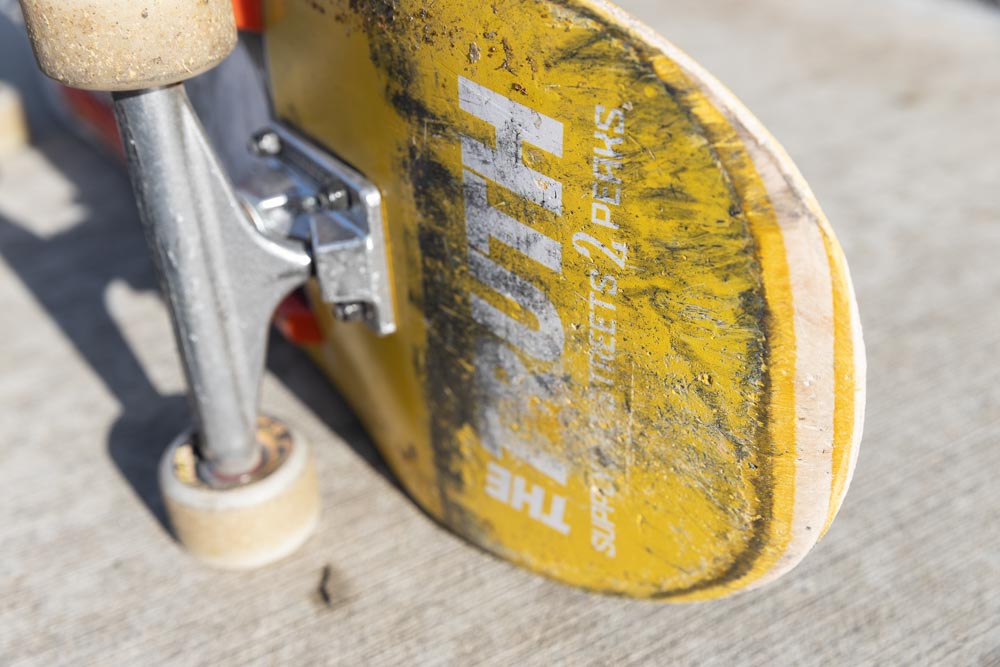
Like I mentioned above, razor tail is when the tail of the skateboard wears down and becomes thin. The term “razor” tail comes from the look of the tail after it’s worn down, giving it a sharp razor-like edge.
The reason razor tail occurs on the tail of the skateboard is because the tail is what gets pushed to the ground most frequently. From manuals to popping tricks, your tail can drag along the ground in a lot of different ways over time. This problem becomes accelerated when you rely on dragging your tail to stop your skateboard, which is a bit of a no-no.
As the tail of your skateboard drags along the ground, the cement wears down the ply’s of wood that makes up your deck. The more these ply’s wear away, the thinner your tail becomes, and the worse your razor tail will be.
How Do You Know If You Have Razor Tail?
You can easily tell whether or not a skateboard has razor tail by looking at the tail of the deck. If the ply’s of wood are severely worn down to a sharp, razor-like edge, the skateboard has razor tail. If the tail is still rounded, you likely do not have razor tail.
If you still aren’t sure, you can compare the nose and tail of your deck to compare thicknesses. A board with razor tail will have a noticeably thinner tail than a nose simply because of the deck being worn down. With that said, it is common for skateboard tails to be a bit more worn down than the nose. So make sure to identify whether the tail has a sharp or dulled edge to really tell the difference.
Does Razor Tail Effect Your Pop On A Skateboard?
Yes, razor tail affects the amount of pop because there is more surface area hitting the ground when you pop. Since the force is distributed over a larger surface area, it weakens the amount of pop you have.
When you have a new skateboard deck, there is a smaller amount of the tail actually making contact with the ground. This puts all the force onto an isolated area when you pop the trick, forcing your board to spring higher into the air. As your tail starts to wear down, more and more of your tail makes contact which gradually absorbs the force of your pop.
Therefore you need to use more force on a deck with razor tail compared to a fresh deck for an equal amount of pop. This makes it feel as if your skateboard is “losing” pop when in fact it just requires more force.
3 Easy Ways To Prevent Razor Tail On Your Skateboard
I think we can all agree at this point that razor tail is something you want to avoid. Luckily there are three easy tactics you can use to prevent razor tail and extend the lifespan of your tail.
1. Don’t Drag The Tail
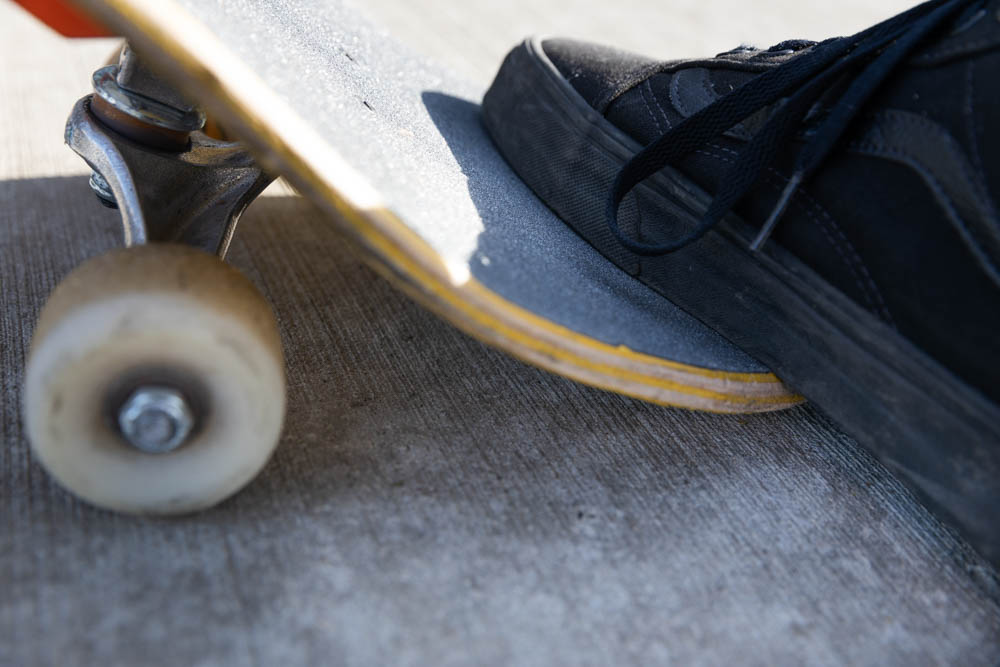
The first (and most useful) way to prevent razor tail is to avoid dragging your tail altogether. Especially if you’re a beginner learning how to skateboard, dragging the tail seems like the natural way to stop. Unfortunately, this is a guaranteed way to get razor tail in a short period of time.
In other cases, you may lean too far back on a manual or land a trick tail heavy. This happens to all of us, regardless of your skill level, and mostly by accident. So rather than avoiding even trying a trick that may cause you to drag your tail, just make sure to unweight the tail as quickly as possible if it drags.
After all, the less time the tail is dragged along the ground, the less will get worn away.
2. Try Skating On Smoother Ground
This might sound a little weird at first, but hear me out. Skateboarding on rough cement can really give your tail a beating and speed up the development of razor tail.
Think of it like running a piece of wood against a coarse versus finer grit sandpaper. The coarse sandpaper will wear down the wood much faster than a finer grit, which is the same as a rough piece of cement.
That’s why it’s best to skate on the smoother ground like what’s at a skatepark, indoor parkade, or the cement pads under bridges. This way even if you do drag your tail by accident, there will be less of your deck worn away with the smoother cement.
3. Try Using A Tail Bone
The third and final option is to install something like the Powell Peraltra Tail Bone which is a plastic block that screws into the tail of your deck. This way, rather than wearing away the wood directly, you grind away this plastic block instead.
There are pros and cons to using tail blocks and they aren’t necessarily for everyone. They will make your board feel a bit heavier while changing the pop angle of your board slightly. They certainly can take some getting used to but are a guaranteed way to protect your deck from razor tail.
Can You Fix Razor Tail?
Unfortunately, you cannot fix razor tail on a skateboard. Although you may think of cutting off or sanding down the affected area, this will dramatically affect the performance of your board. If you don’t want to purchase a new deck, you can skate on the nose instead to temporarily fix this problem.
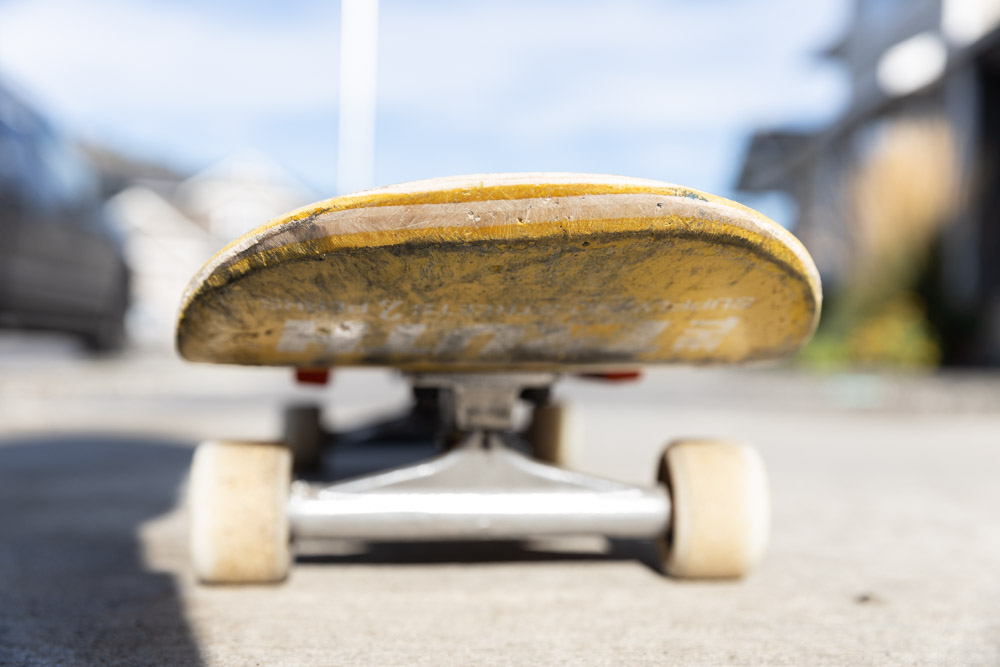
Since razor tail changes your board permanently, there isn’t much of an option but to replace your deck. It’s not a good idea to cut off or sand down the razor tail because it will shorten the length of your tail and affect how it pops. It may also damage the epoxy resin between the ply’s of your deck and cause them to split easier.
In most cases, trying a DIY fix for your razor tail will cause more issues than solutions.
Other than buying a new deck, you can try to skate the nose of your board rather than the tail. Since the nose likely doesn’t have any razor tail, it’s like skating a fresh deck again. It might feel a little weird at first since the nose is shaped differently, but it certainly works to get a little more life out of your skateboard.
How Much Razor Tail Is Too Much?
Razor tail is an inevitable stage in the life of your skateboard. Especially if you tend to skate the same deck for long periods of time, it’s going to develop no matter how careful you are. With that said, just because your board starts to develop razor tail, doesn’t mean it needs to get thrown in the bin.
You will know that your razor tail is too much when it noticeably affects your skating. If you find you can’t pop as well and are struggling to get onto those features you want to skate, it could be time to replace your deck.
Another occasion when your razor tail may be too far gone is when it starts to splinter. As the tail becomes thinner, the ply’s of wood is more prone to separating. This not only weakens the strength of your tail but can be annoying to skate on in general.
If you really aren’t sure if your razor tail is too far gone, try skating a friend’s deck with a fresher tail. If you find skating suddenly got a whole lot easier, then maybe, just maybe, it’s worthwhile getting a fresh deck and tail to skate on.
Ultimately it’s up to you to decide what “too far gone” means to you. If you aren’t finding your performance is affected, then it’s fine to continue skating with a razor tail.
Happy Shredding!

